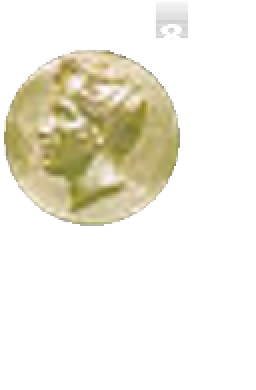Travel Reference
In-Depth Information
Left
Bertolt Brecht's study
Right
Memorial on Große Hamburger Straße
Tacheles
The ruins of the former Wil-
helm-Einkaufspassagen, one of
Berlin's most elegant shopping
centres dating back to the turn
of the 20th century, have been
transformed by artists into
an alternative arts centre.
It now houses work-
shops and cafés and
offers a regular pro-
gramme of events.
d
Oranienburger Str. 54-56a
•
Map F3
•
(030) 282 61 85
Stüler (1800-65) and Johann
Gottfried Schadow (1764-1850).
d
Chausseestr. 126
•
Map F2
•
summer:
8am-8pm daily; winter: 8am-4pm daily
Brecht-Weigel-
Gedenkstätte
Bertolt Brecht, one of the
20th century's greatest
playwrights, lived here
with his wife, Helene
Weigel, from 1953-6.
Original furnishings are
on display alongside docu-
ments and photographs.
There is also an archive of
his work.
d
Chausseestr. 125
•
Map F2
•
10-noon Tue-Sat exc Thu;
10-noon & 5-7pm Thu; 9:30am-2pm Sat;
11am-6pm Sun
•
(030) 283 05 70 44
•
Admission charge
Schinkel, Dorotheen-
städtischer Friedhof
Museum für
Naturkunde
The Museum of Natural History -
one of the largest of its kind - has
the world's largest dinosaur skele-
ton: a brachiosaurus found in Tanza-
nia. Also displayed are fossils,
meteorites and minerals
(see also
p47)
.
d
Invalidenstr. 43
•
Map F2
•
(030) 20 93 85 91
•
Admission charge
Jewish Berlin
In the 19th century, Berlin had a
population of 200,000 Jews, the
largest such community in Ger-
many. Apart from wealthier Jews
in the west of the city, it also
attracted many impoverished
Jews from Poland and Russia
who settled in Spandauer
Vorstadt. One part of the district,
the criminal red-light district, was
also known as Scheunenviertel.
Nazi propaganda used the name
to denote the entire Spandauer
Vorstadt, in order to tarnish the
Jews by association. Today, the
Jewish quarter is still known
under its “wrong” name as
“Scheunenviertel , although very
few Jews live here now. Only
some 5,000 Jewish Berliners
managed to survive between
1933-45 in hide-outs.
Dorotheenstädtischer
Friedhof
Many celebrities have found their
final resting place in this charm-
ing cemetery, dating back to
1762. To the left of the entrance
are the graves of Heinrich Mann
(1871-1950) and Bertolt Brecht
(1898-1956); further along stand
the pillar-like tombstones of the
philosophers Johann Gottlieb
Fichte (1762-1814) and Georg Wil-
helm Friedrich Hegel (1770-1831).
On Birkenallee (left off the main
path) you can see the graves of
master builder Karl Friedrich
Schinkel (1781-1841) and the
architects Friedrich August
Museum für Naturkunde:
www.museum.hu-berlin.de
124

















